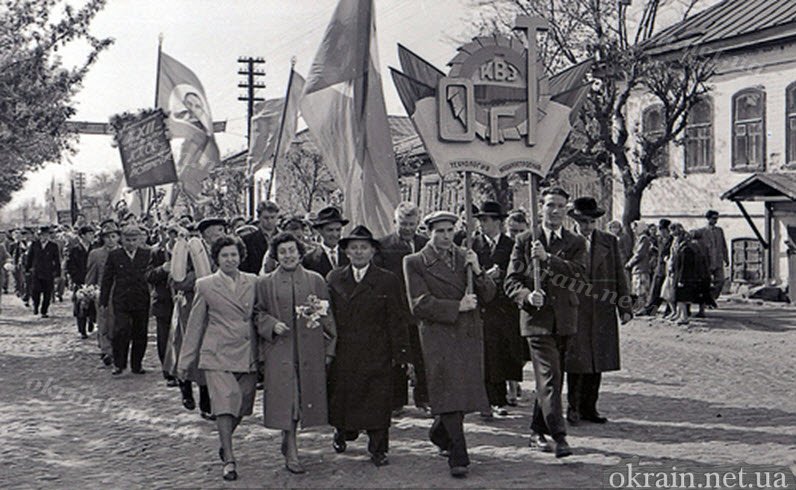Author: A. Lushakova
The history of celebrating May 1 in Kremenchuk has more than 100 years. The first May Day took place in 1898 in the Deevsky forest behind Kryukov. But already on May 1, 1901, the city committee of the RSDPR organized a mass demonstration of workers, in which more than 200 people took part. On May 1, 1902, the first political demonstration took place in Kremenchuk under the slogan “Down with autocracy!”, “Long live freedom!”. On May 1, 1903, the workers celebrated a political strike.
The celebration of May Day is becoming traditional, it is celebrated annually. The proletariat should prepare for it in advance. The Committee of the RSDLP distributes leaflets and proclamations calling on the working people of the city to rise up to fight for their economic and political rights.
After the October Revolution, the First of May was proclaimed a public holiday and soon became one of the most beloved by the vast majority of Kremenchuk. On this day it was difficult to find a person who would not go out into the street.
At 10 o’clock in the morning, the parade of the military units of the Red Army stationed in Kremenchuk began on Cathedral Square. The infantry clearly printed a step, the cavalry dashed dashingly, and the artillery rumbled heavily. Often during the parade, young fighters took the oath.
The demonstration opened with a column of schoolchildren and students. Each educational institution, secretly from the others, prepared the design of the festive procession. So, during a demonstration on May 1, 1937, secondary school No. 2 carried aircraft models and gliders (young people raved about aviation), secondary school No. 9 walked in Spanish caps as a sign of solidarity with the people of Spain fighting fascism, secondary school No. 7 – dressed in suits heroes of the works of A. Pushkin (this year the 100th anniversary of the death of the poet was unusually solemnly celebrated), Secondary School No. 13 – in the national costumes of the peoples of the USSR, and the 32nd railway school demonstrated a huge model of the steam locomotive “Joseph Stalin”. At the same time, the schools were not in the order of numbers, but according to the results of academic performance. The columns of enterprises and institutions were formed in the same way. The right to open a workers’ demonstration was given to the winners of the May Day competition. In the Festive columns – red banners, portraits of members of the government and the Central Committee of the party, slogans and banners, often carried samples of new products. When cars began to appear, incredibly happy children and amateur art participants rode in open cars, which represented something acutely political: evil bourgeois, White Guards, Nepmen, kulaks, fascist dictators, etc. In front of the podium, on which local leaders stood, flocks of pigeons, and bundles of multi-coloured balloons were released into the air, accordions were poured into the columns and friendly songs sounded.
By this day, they specially sewed new outfits, festively cleaned houses, cleaned and swept streets and yards. After the demonstration, they did not go home but went to their clubs, where they watched new films, or to stadiums where competitions were held.
And in the evening, mass festivities began in the Proletarian Square, the Revolution Square, the Transstroy Garden, the Car Builders Park and, of course, in the Railroad Workers Garden. Fireworks stars scattered in the spring sky completed the holiday.
The scenario for holding the May Day celebrations, developed before the war, was preserved with minor changes until the end of the 1980s. Only in the second half of the 60s, there was no military parade.
Author: A. Lushakova

